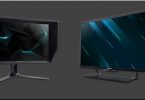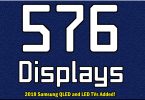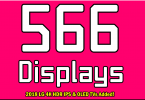Its been quite a while since our last update, but we managed to get several TVs tested just in time for Black Friday! A pleasant recurring theme this year is the abundance of low input lag TVs, giving gamers plenty of options to choose from for hardcore gaming sessions.
Samsung has produced quality low input lag TVs for several years now, and were the first manufacturer to really push FreeSync adoption into large screen TVs last year. They continue this trend with 2019 QLED models, allowing Xbox One and AMD PC users to experience stutter-free gaming with lower input lag than traditional V-SYNC. It’s very likely that both the PlayStation 5 and next Xbox console will support FreeSync as well, so this is a good feature to prepare for now.

The majority of displays tested were Samsung’s QLED models, ranging from several sizes from the Q60R, Q70R, Q80R, and Q90R series. We also managed to test a lone RU7100 unit, which happens to have the lowest input lag of the bunch! However, the difference is quite small, so the added features of the QLED series is highly advised if its within the budget.
All of the models below achieve input lag numbers that fall under our excellent rating, making them very comparable to the best 60hz gaming monitors. Most 60hz gaming monitors hover around 10ms input lag, so the slight input lag increase on these TVs will be imperceptible at 60hz for most users.
Samsung’s 2019 models can be quite confusing this year. After all, if they all have low input lag, why pay extra? There’s good reason to skip the RU7100 and Q60R if you’re going for HDR performance, as those models will not provide sufficient peak brightness for HDR content. The Q70R, Q80R, and Q90R all feature full-array local dimming, whereas the RU7100 and Q60R are edge-lit displays and feature no local dimming at all.
The key difference between the Q70R, Q80R, and Q90R lie in the peak brightness during HDR content. The Q70R goes up to around 800 nits of peak brightness, the Q80R goes up to 900 nits, and the Q90R tops out at around 1300 nits of peak brightness. There are also variances in viewing angles among the three models. The RU7100 by comparison features a paltry 300 nits of peak brightness, whereas the Q60R goes up to around 450 nits.
The following models were added to our input lag database:
| Size | Model | Input Lag | Price |
| 55″ | UN55RU7100 | 12ms | Check Amazon |
| 82″ | QN82Q60R | 14ms | Check Amazon |
| 65″ | QN65Q60R | 14ms | Check Amazon |
| 55″ | QN55Q60R | 14ms | Check Amazon |
| 55″ | QN55Q80R | 14ms | Check Amazon |
| 55″ | QN55Q70R | 14ms | Check Amazon |
| 75″ | QN75Q90R | 14ms | Check Amazon |
| 65″ | QN65Q90R | 14ms | Check Amazon |
| 65″ | QN65Q80R | 14ms | Check Amazon |
| 65″ | QN65Q70R | 14ms | Check Amazon |







